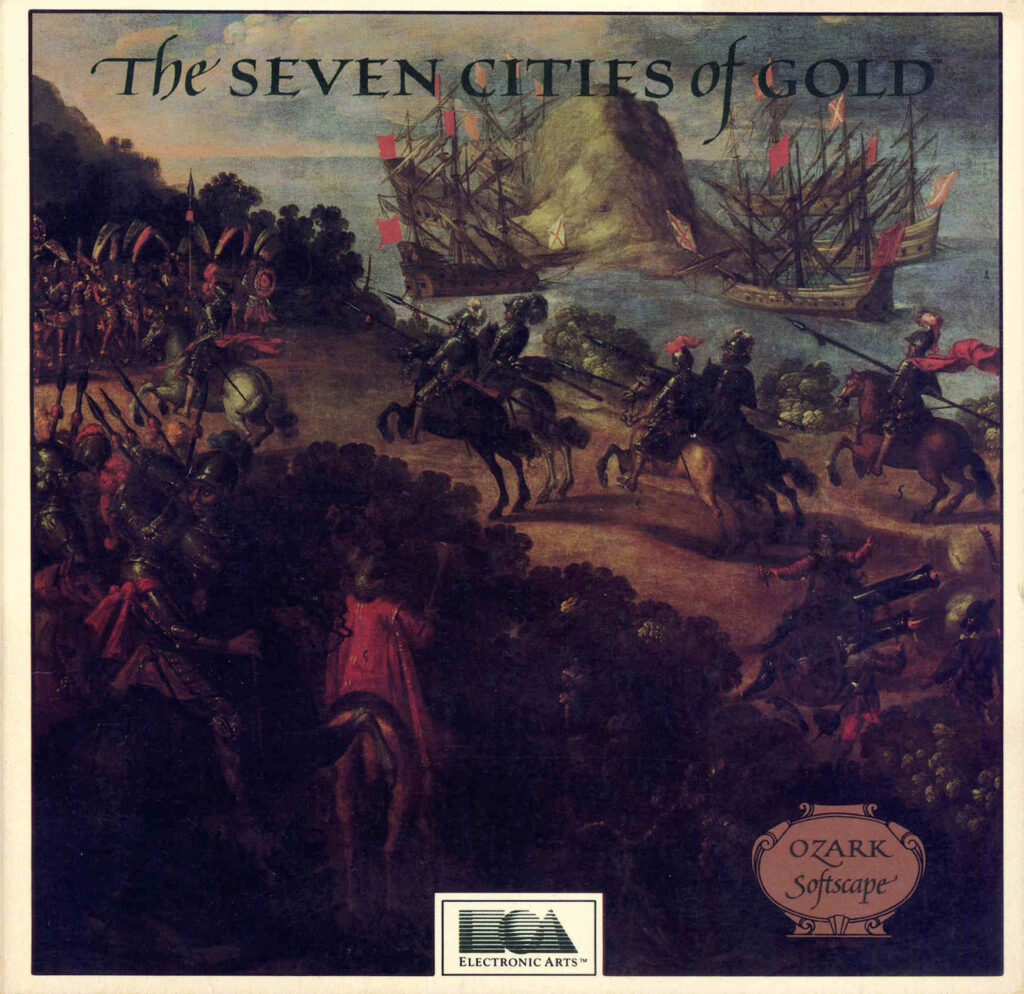
I have navigated for the King and Queen of Spain for 8 long years, and all I got was a lousy “Poor Rating”. My rivals at court scoff, mocking my “discovery” of “Cipango“. While I would be content to spend the rest of my life trying and failing to spend the gold I have returned with, I must prove them all wrong, on my dime.
Setting sail southward from the island I had circumnavigated, I will prove the existence of Cipango beyond a shadow of a doubt. With many provisions and ample goods for trading – those natives sure do love their shiny baubles – I embarked on my third journey to the West Indies.
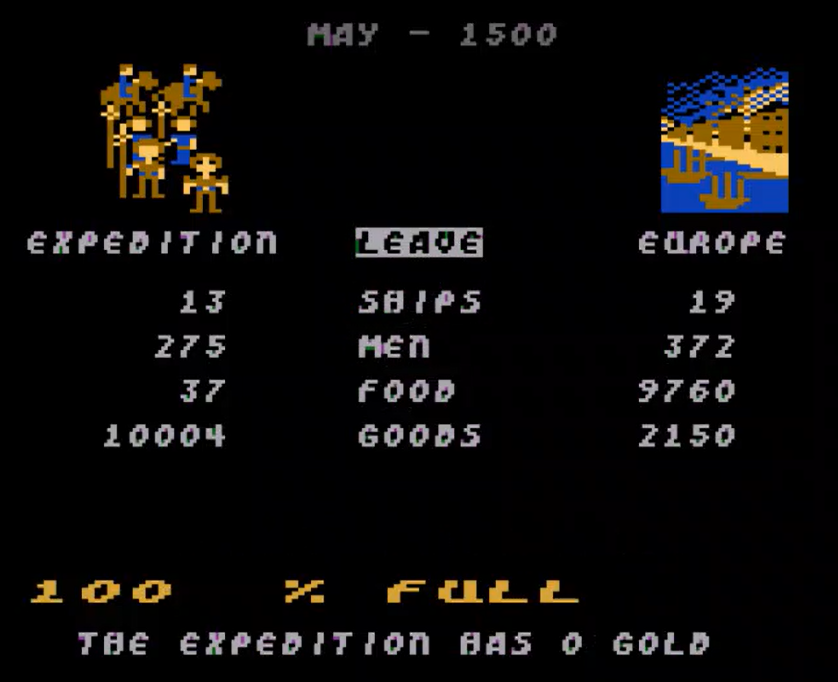
After three days sailing south from the island’s southernmost tip…
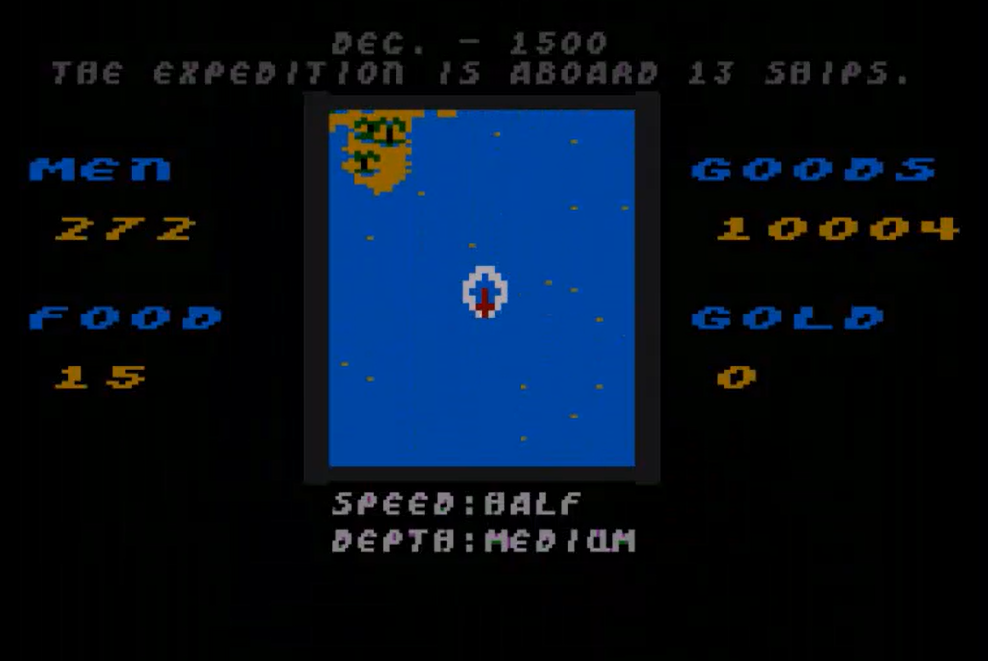
… there it was! Cipango! The real Cipango!
I also found, alas, some treacherous reefs! I left a ship and its crew behind to map them meticulously; so meticulously indeed that as I pen this diary they are still mapping!
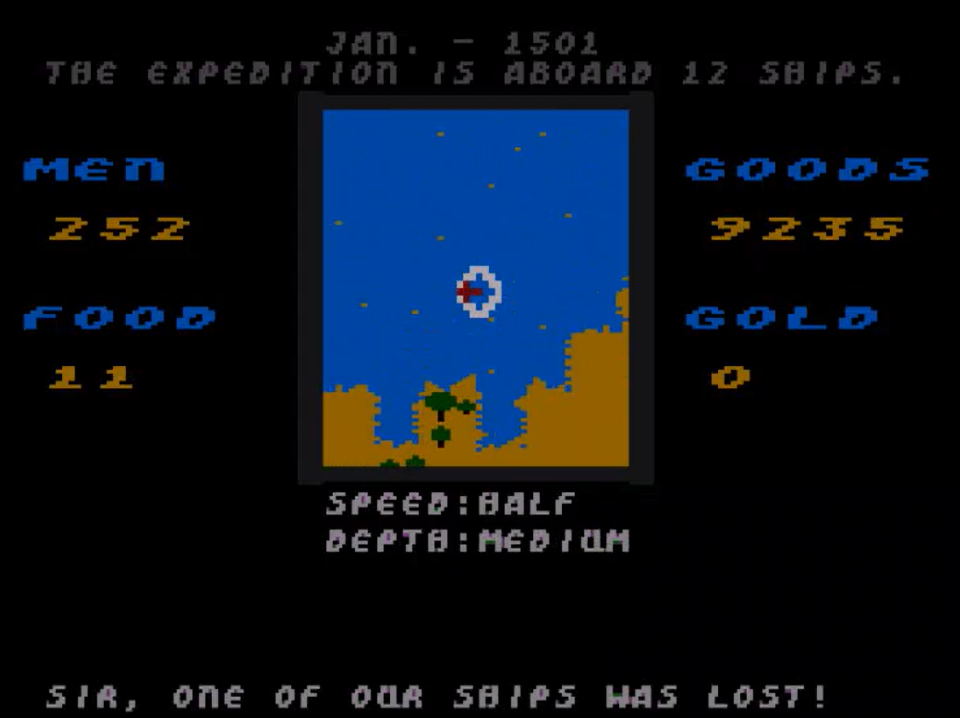
Inland, along the banks of a river, I encountered a civilization of remarkable sophistication, comparable not to Spain or Italy, of course, but certainly rivalling England or even France. Those people called themselves the Aztecs, and dwelled in cities under the shadow of cyclopean stone pyramids.
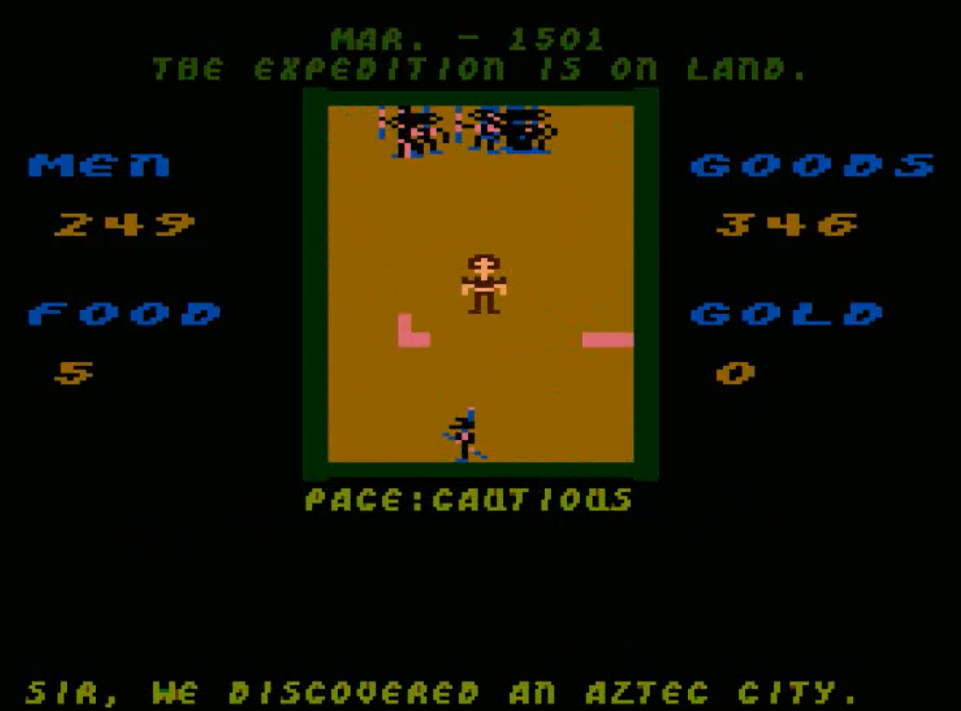
After my two earlier voyages, and that’s not counting earlier escapades to Milan, I became used to negotiating with hostile natives with whom I had nothing in common. The governor of the city provided me with guides, native bearers – four for each one of my men – and plenty of gold.
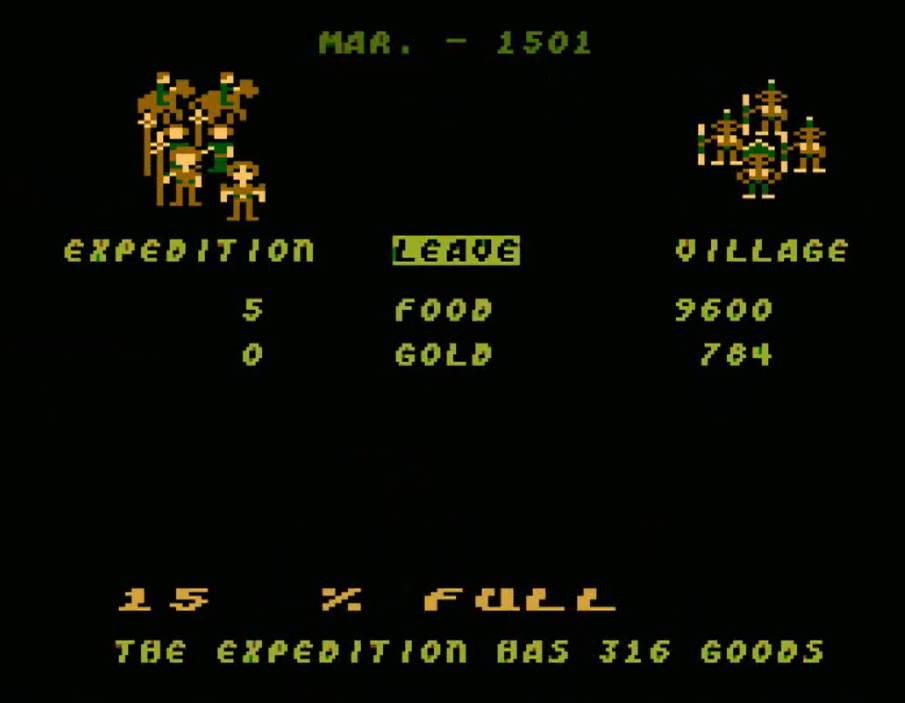
The guides allowed me to uncover a dense network of Aztec cities, all willing to trade my trinkets for their gold, and I brought so much gold to the landing site that my ships could not carry it all!
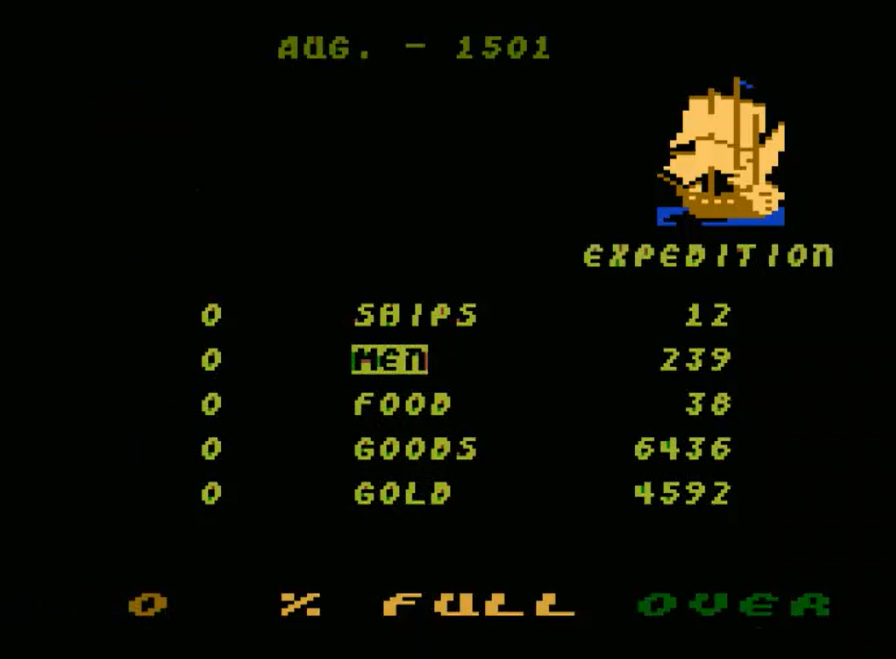
I chose this moment to disclose to my men some hitherto secret royal instruction, delivered to me in speech by the King himself: I was to build a fort on this new land! I left 15 men with enough food to hold for 4 months, reassuring them of my swift return. By complete coincidence, the space taken in my hold by those 15 men and their food corresponded perfectly to the volume I had to free for my gold!

Sailing Westward, I found another river and more of those “Aztecs”, which were just as eager to trade goods for gold.
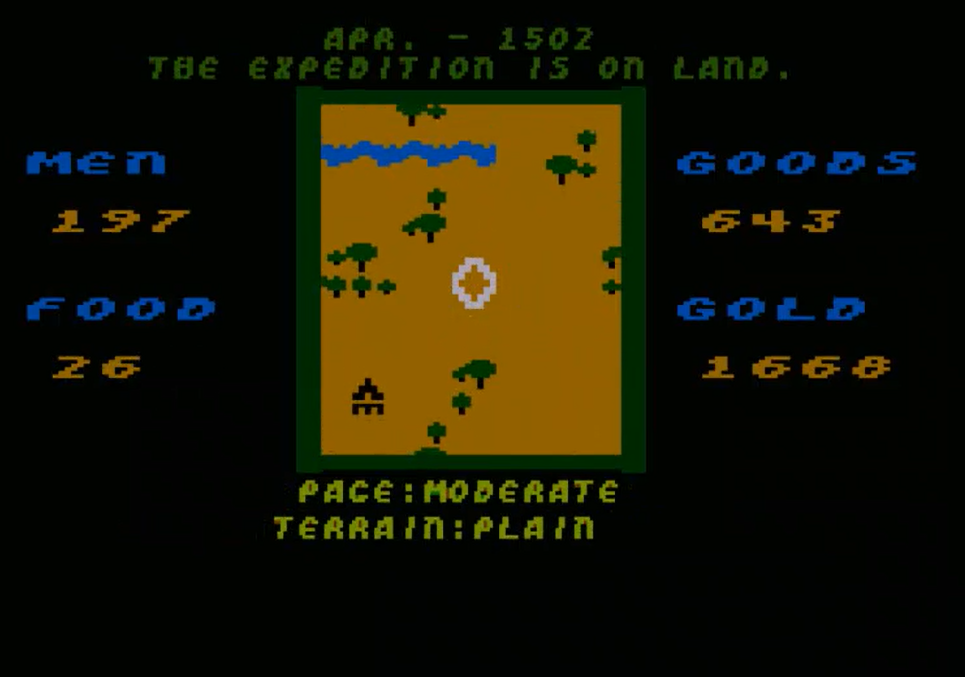
Yet again my ship could not possibly carry all the gold I acquired by trade, and once again I had to reveal a set of secret orders to build a second fort. I promised the men that the King & Queen of Spain were currently organizing a secret fleet to turn their fort into a full-fledged colony, and then each and every one would be given a rank at the measure of their heroism: captain, admiral, viceroy maybe. Meanwhile, I would safeguard their gold in Spain, lest it rust under the damp climate of Cipango.
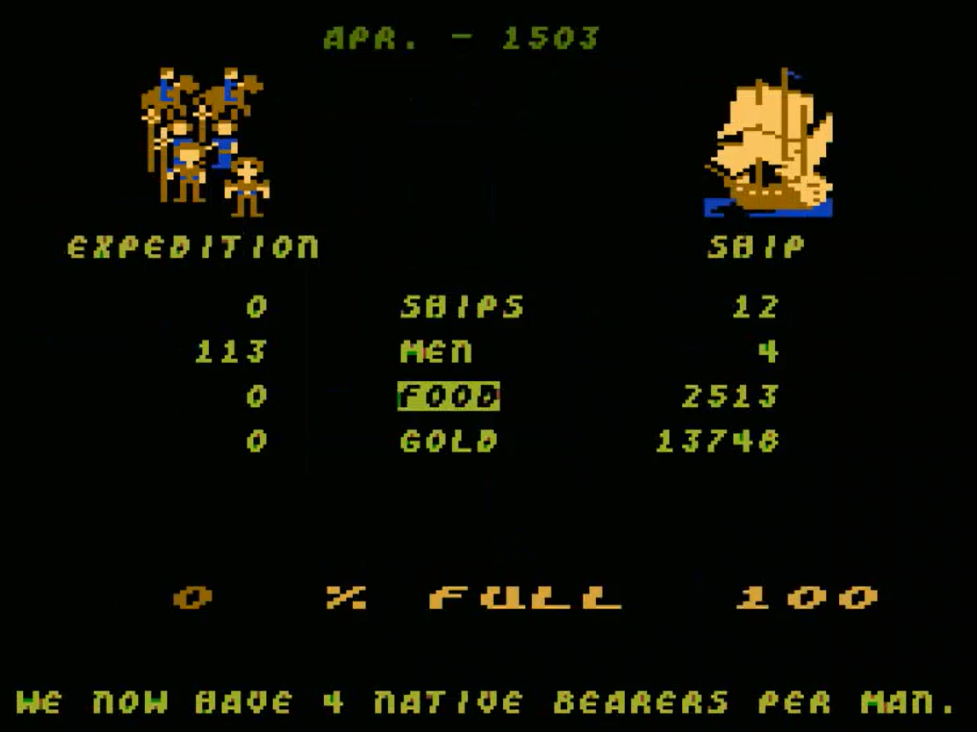
I returned to where I first touched this new continent, and noticed a previously unnoticed river, teeming with more of those Aztecs. I hastily produced a third set of orders, for a third fort that would soon be visited by the Pope himself, eager as he was to see this Earthly paradise, and each of the guardians of the fort would be – obviously – be granted absolution and forgiven for all their past and future sins.
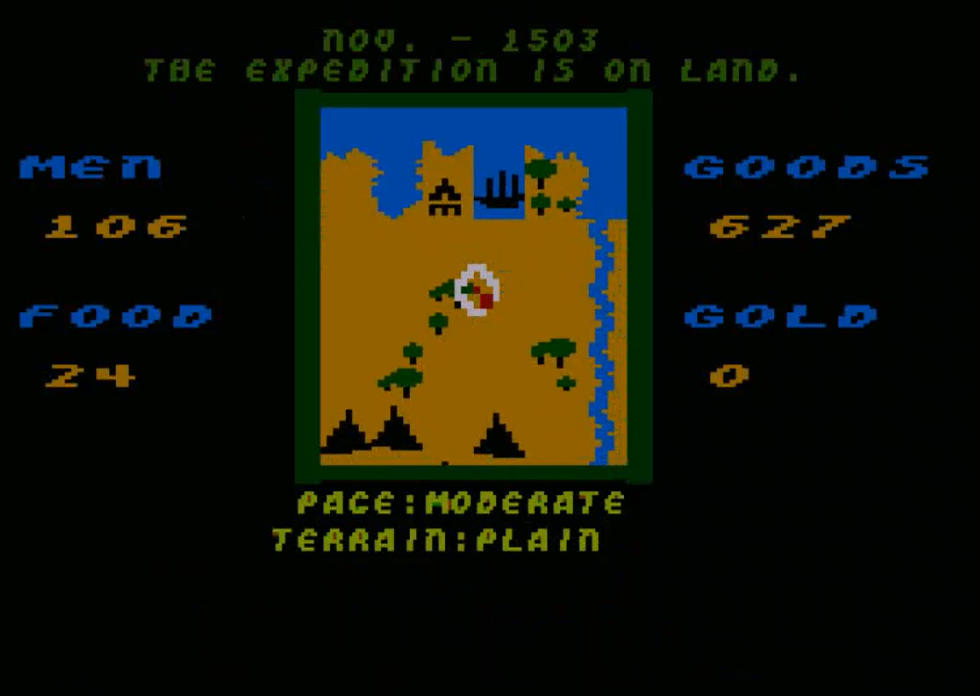
With no trinkets left and laden with gold, I was ready to return to Spain, but for a final task. An old captain, renowned for his navigational prowess using an abacus, had entrusted me with one last mission. In the northern reaches of the first island, I revisited the mission I had established 8 years prior.
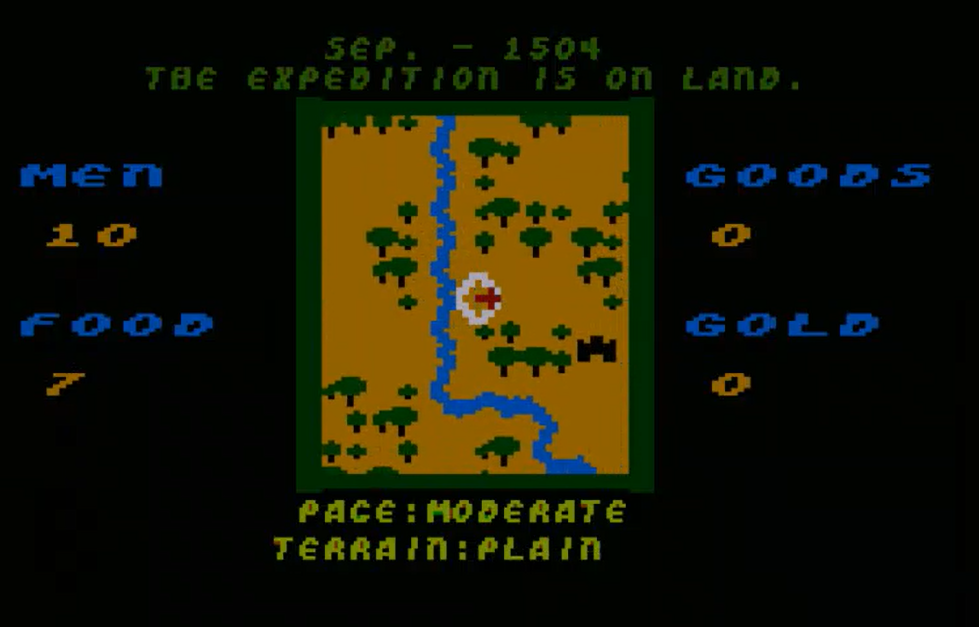
It was still there, and still flying the flag of Castille, though it was struggling with supply shortages, and would have disappeared without my support.
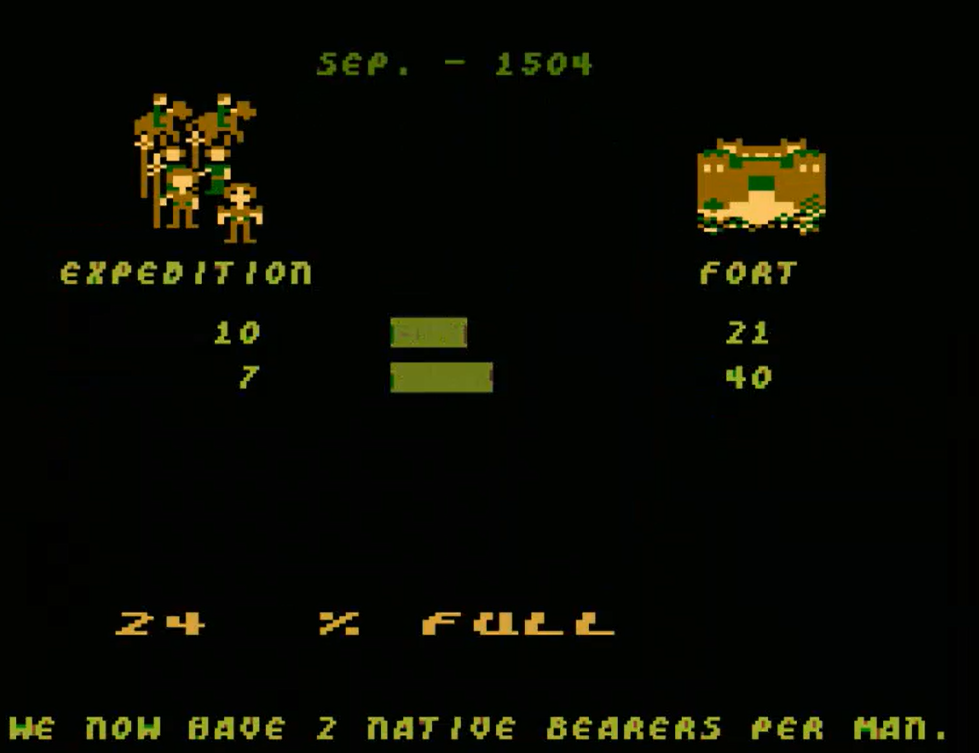
I had successfully proven the worth of these lands – whether they were Cipango or not – and the wealth I brought finally satisfied the Royal Court.

Enriched beyond measure, I contemplated my next move. I had spent 12 years exploring the Oceane Sea for the Crown of Spain, and those years had taken their toll.
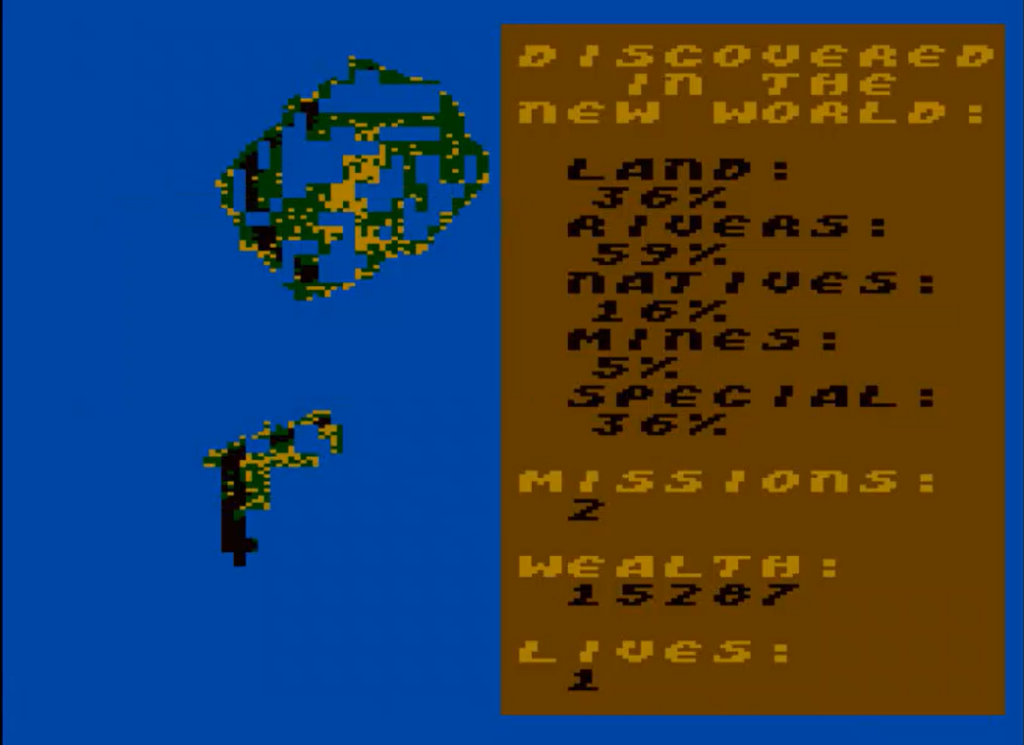
I was now one of the richest men of Spain, nay, of Europe. I could buy everything that Europe had to offer!

It was time for a new course. Perhaps politics? The Sforza had been controlling my hometown for too long, and maybe the Royal Consorts would be willing to back another expedition, this time to the East…
That’s where I conclude my playthrough of The Seven Cities of Gold. Officially, the campaign can go on for 50 years – so 35 more years to go. However, it does not offer anything new, and boredom started to set in during the second expedition already. I prefer to end it now, and move to the Ratings & Review directly.
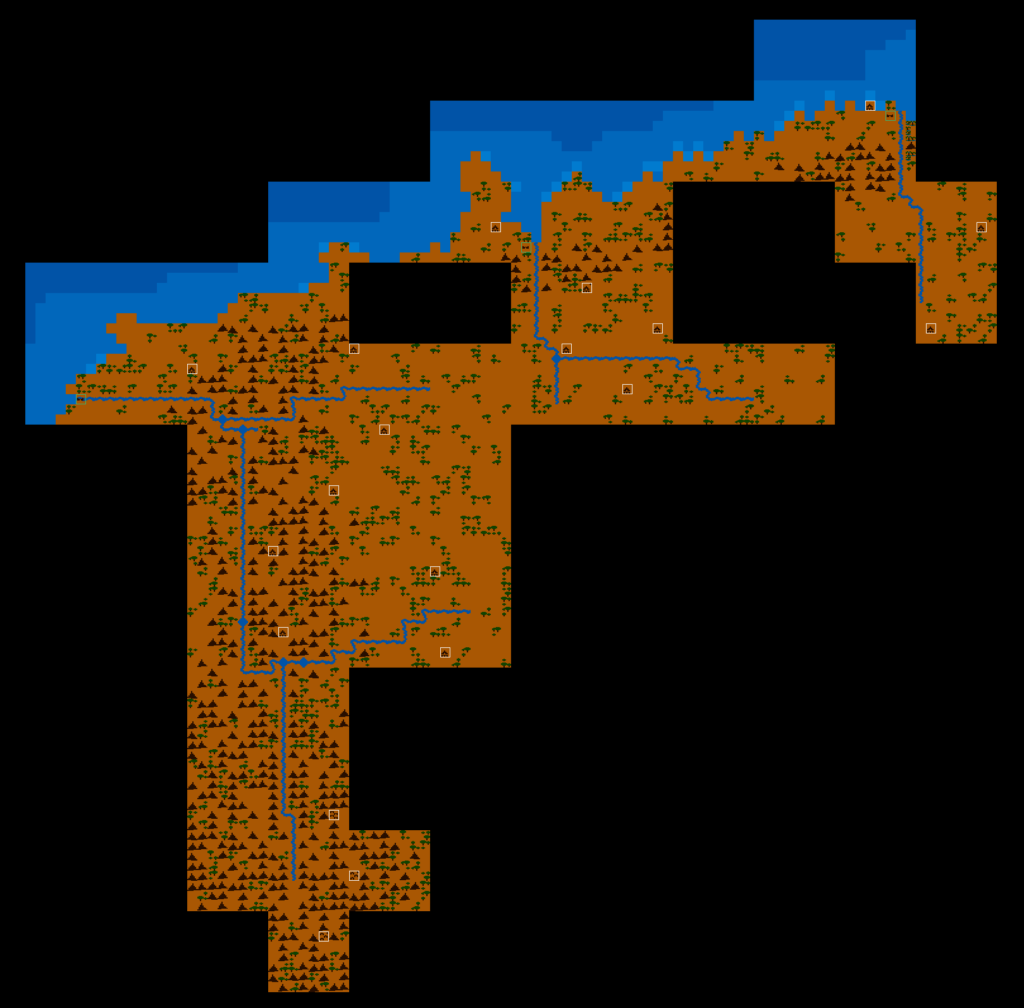
Checking the world map, I missed the Mayas on the East Coast of the Southern Island – they are even richer than the Aztecs. There was another City of Gold left, and, even better, the “Maya Capital”, but I leave these to future explorers. There were also several smaller islands, but none had much value.

The red squares are the “special places” that give extra exploration points (“great lake” “deep chasms”, “lush jungle”, …)
Rating & Review
The Seven Cities of Gold by Dan (Danielle) Bunten and Ozark Softscape, published by EA
First release: April 1984 on Atari
Genre: Colonization
Average duration of an expedition : 1 hour
Total time played: 6 hours
Complexity: Average (2/5)
Final Rating: One star
Ranking at the time of review: 50/134
The history of The Seven Cities of Gold has already been covered at length by the Digital Antiquarian, and I don’t believe I could add anything to it. Suffice it to say that after M.U.L.E., Dan [later Danielle] Bunten initially wanted to make a computer port of Avalon Hill’s Civilization, but was convinced by Electronic Arts to downscale into something more manageable: a game about colonization. Inspired by SPI’s Colonization (the game so unabashedly ripped off by Epyx’s New World), Bunten envisioned a game with three development stages… of which only the first one – the exploration – could be implemented.
One of the striking features of the game is the native “mini-game”, as we would call it nowadays. To simulate the difficulties of communicating with a civilization so foreign to the Spaniards that they didn’t share a single word, Bunten forced the player to navigate through villagers until they found the chief – the only one willing to trade. The behaviour of those villagers would depend on the situation: early in the game they would typically approach the player, but still keep some distance. Later, and particularly if they have traded with the Spaniards several times – or at least heard of them – they would mostly ignore them, or at least only slowly move toward them, making it trivial to reach the chief. If the player has a bad reputation however, they would aggressively move toward the Spaniards. Touching a Native would kill him or her and anger the other ones, and too much anger turns the Natives hostile, turning the mini-game into pointless whack-a-mole until the total defeat of either side.
The DataDrivenGamer has also covered the game, and in both his and the Digital Antiquarian’s accounts I am surprised by their assessment that violence is more efficient than trade. My experience is the exact opposite: trading is easy once you’re used to the mini-game – I only failed twice in the whole campaign – whereas killing Natives is extremely costly in men and makes you a target for ambushes which will claim yet more men.
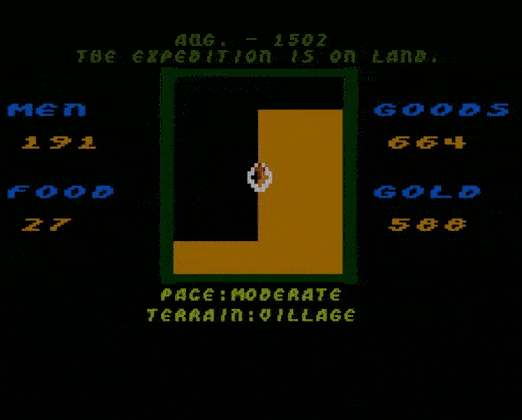
Apart from that, I agree with their opinion that it does not take long to see everything there is to see in Seven Cities of Gold – the game feels like a prototype, or a first alpha version on which a grander game could have been built, but never was. There are so many features missing that it would be pointless to list them all, but the most disappointing to me was how static the world was between two returns to Europe. Isn’t anyone else exploring this world, trying to race me to the Cities of Gold? Why aren’t the Natives jockeying for access to my goods, or maybe preparing for my return with soldiers? Alas, deep down, the game is simply about combing a map as efficiently as possible to find hidden bags of gold, with extra steps.
A. Presentation: Adequate. The Seven Cities of Gold‘s breadth and ambition were unique in 1984, and they still transport a modern player for one expedition. Alas, by the second expedition, the player will realize the game falls well short of expectations.
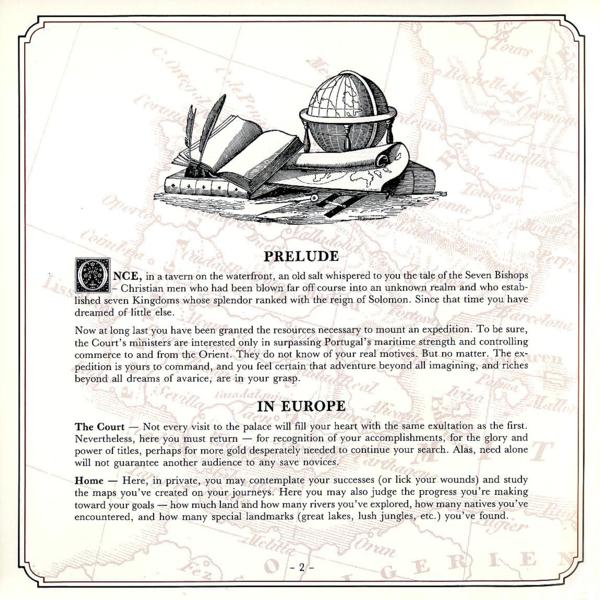
B. UI, Clarity of rules and outcomes: Good. The manual is reductive: 16 pages in total, of which 5 loosely explain the rules. Most of them are hidden to the player, but given this is an exploration game it certainly plays in its favour rather than its detriment. Controls are easy in any case: the joystick and its one button are enough.
C. System: Very poor. The game is wide, but it has no depth – once discovering new rivers is stale, the village mini-game ends up being the most interesting part of the gameplay.
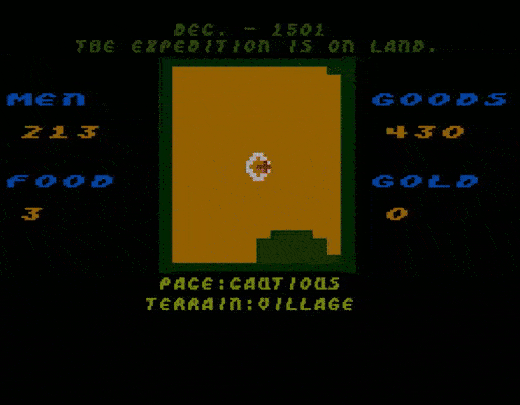
D. Scenario design & balancing: Poor I found the game to be on the easy side, at least on the Journeyman difficulty, and after the first expedition I don’t think you can lose any more if you play at least a tiny bit cautiously.
The Seven Cities of Gold comes with a map of the real world in which you know you have to beeline for the Mayans, and a more interesting world generator. The worlds it generates never have the complexity of the real one, but it is nonetheless pretty impressive:
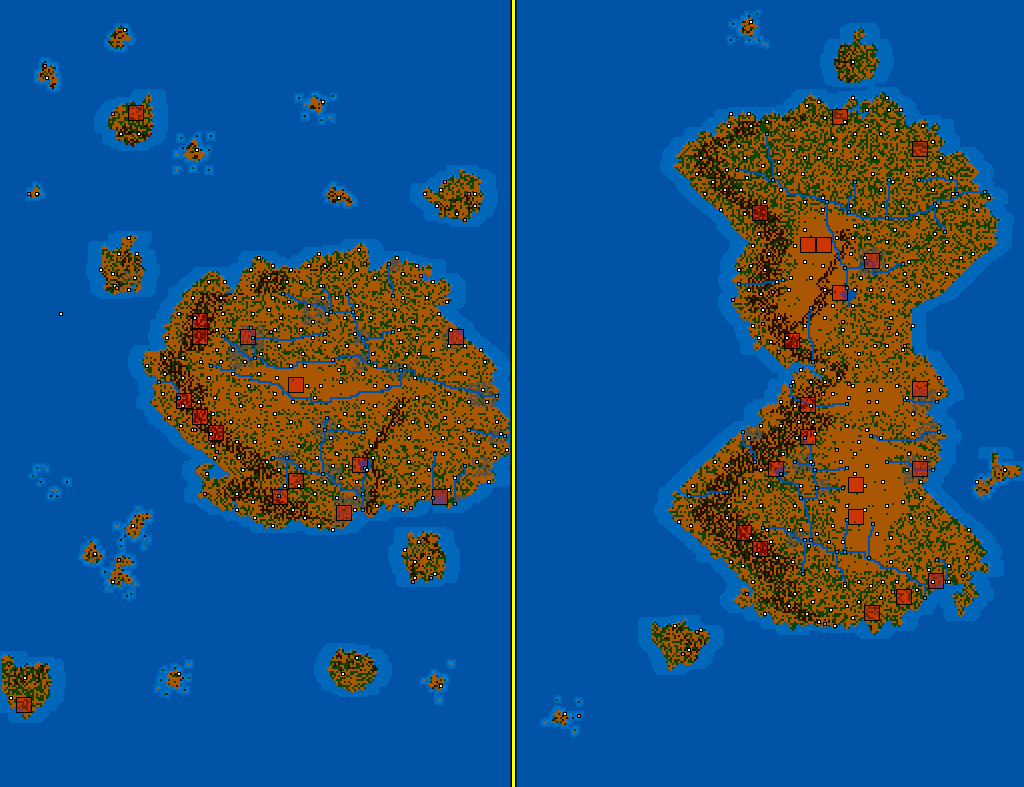
E. Did I make interesting decisions? Only during my first expedition, and even then not many (“stop or encore”)
F. Final Rating: One star. While the game is visually and conceptually impressive for the era, once you have traded with your first chief you have exhausted its features. A while ago, the cRPGAddict wrote an article about breadth and depth, reckoning “my thesis is that a good game doesn’t have to feature a lot of breadth or depth, but rather than it needs to keep them in balance.” In the same article, he also states: “A game with extreme breadth and almost no depth would be something like Red Dead Redemption 2 or Fallout 4 if all you could do was explore the map. You’d get bored pretty fast.” Well, this describes The Seven Cities of Gold exactly: all breadth and no depth.
I initially rated the game much worse but then I realized I had heavily overweighted my last expedition, where I had lost interest in the game and just went from Aztec city to Aztec city to collect gold. My first impressions of the game had been more positive, and it should count as well.
I understand why it was so popular at its release: it was unique, humongous, it let you move wherever you wanted, promised a lot and it could convince you that it held many secrets waiting to be discovered. I don’t think it has totally shed off its uniqueness, but for everything else it has been superseded by much better games, including some focusing on exploration specifically, for instance Expeditions: Conquistador for a historical experience with strong RPG elements.
Reception & Legacy
The Seven Cities of Gold was Bunten’s most successful game, with more than 150 000 copies sold. Its many reviews were lavish, using adjectives such as “exceptional”, “riveting” or “ground-breaking”. I could not find a single negative review between 1984 and 1986, including in non-American publications. Parsing through the review, what surprises me the most is how often the game is described as being “decision-rich” – that’s the opposite of my experience, and I feel players may have been overthinking it. Computer Gaming World, in which Bunten has a regular column, covered the game in their June issue, with an AAR + review written by Sandra Carlisle, one of Seven Cities‘ playtesters. Later in December 1985, the game was later voted “best strategy game of the year“, which I find puzzling given that a. it was released the previous year and b. the strategy game Kampfgruppe won the “best game of the year-no-qualifier” in the same issue. The Seven Cities of Gold‘s popularity endured: in 1996, it was ranked 61st best game of all time by Computer Gaming World, and still noways it is regularly the topic of retrospectives, with commenters sharing emotional memories about the game. I think you had to be there.
The Seven Cities of Gold had quite a legacy. Its direct legacy is a bit disappointing: in 1985 Ozark Softscape released another game with the same engine called Heart of Africa, whose reviews were mixed, as the game was described as not being at the level of its predecessor. The Seven Cities of Gold itself received a “Commemorative Edition” in 1993: very well-received but quickly forgotten. However, its indirect legacy was huge. In particular, Sid Meier stated he was impressed by The Seven Cities, which he called “the first open world game” and a major influence on what Meier calls probably the second open world game: his own Pirates (“You were your own boss, and you could travel anywhere in the world and have these cool adventures“). Just like The Seven Cities of Gold, it might not be a real strategy game, but I will cover it nonetheless when I reach it.
8 Comments
Fantastic review as always, and lovely to see the word humongous used!
Regarding trade vs. conquest, I did a little experiment and tried a true conquistador voyage on a coast-to-coast tour de Mexico. I brought 300 men (this was the second trip), 10 food per man, and no goods, and I’d conquer each town, take all of their gold, all the food I could carry, and leave behind one man for a token fort, which seems to prevent ambushes.
The result is that the first town, a pueblo, was by far the costliest, costing me 28 men, but after that, I found and conquered six more towns including four Aztec cities, losing 2-7 men per town (including the one I’d always leave behind). Discounting the cost of the first pueblo, a trip across the continent and back cost me 33 men and earned me 5714 gold. And that’s without finding any gold mines. And I could probably keep going up the coastline and make many more trips.
That said, the real money is in mines, and I didn’t find any. Maybe the bearers are more inclined to help you find them if you’re nice? If so, that would make trade the better option.
Interesting. It looks like the first battle is the costly one – though if I don’t murder the cacique I can lose everyone (80+ guys )in that first battle.
Did you raid Pueblos or Aztes/Mayas? The difference in wealth is incredible as you know – I suspect the gold mines were added in order not to make North America and the Caribbeans not a TOTAL waste of time. Just a huge cost of opportunity.
In both the above anecdote and my most recent one on the random map, I mostly raided Aztecs, with a few Pueblos interspersed. Never made it far south enough to reach the wealthier Incas.
Interestingly, based on Kroah’s utility, the game seems fairly consistent about the civilizations’ latitudinal coordinates. Incas spawned from 0-20S and their capital at 15S, just like the historical map. Aztecs spawned 20N-0, a bit less north than the historical map, and Pueblos anywhere there were Aztecs or Incas. Outside the 35N-25S band, nothing but elk hunting tribes and llama herders. I have half a mind to try this again. And another half to just put this boring old game to rest.
Unrderstanding the game is the most interesting part of The Seven Cities.
I am honestly quite impressed by the map generator. The map seem more interesting and realistic than what I remember were the maps of Civ I to Civ III (later Civ used hexagons, so it felt different)
Civ 4 was still square; it was Civ 5 that moved to hexes.
For some reason in the ’80s, CGW magazine had the “year” from their game of the year selection defined as mid-summer to mid-summer, and not a calendar year.
Since Pirates can be played in many ways, you could approach it as a strategy game. For example setting a goal of raising the Spanish flag in every French colony by conquering them all. At least the real-time tactical land battles are not as bad as in Napoleon at Waterloo and the use of violence is more justifiable than in the Seven Cities of Gold.